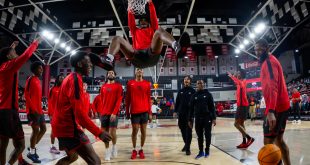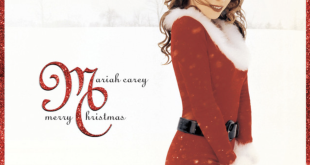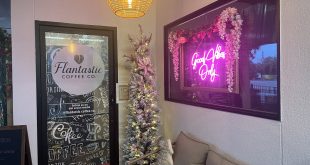Story and photo by Jenna Arnold, Editor-in-Chief.
VSU’s campus lost over 1,600 trees due to the recent storms through 2023 and 2024. The campus faced hardships with hurricanes Idalia, Debby and Helene.
VSU was first recognized as a tree campus in 2013 by the Arbor Day Foundation. The Longleaf pines have been a crucial part of VSU’s identity, since the inception of the campus. It represents the historical landscape of our identity and is recited in the alma mater.
“Mong the stately pines of Georgia
Glorious to the view
Stands our noble Alma Mater
Basking ‘neath the blue”
According to the VSU website, President Dr. Richard Carvajal announced the creation of the Campus Grove Committee, a group focused on planning for restoring the natural aesthetic of VSU’s landscape.
Dr. Emily Cantonwine, a plant pathologist professor, understands the gravity and effects of the significant tree loss.
“The storm not only damaged VSU’s landscape but also our sense of identity,” Dr. Cantonwine said.
The storms have damaged a broad range of trees, including pines, oaks and pecans. The trees and shrubs will overcome the loss of their surroundings through many seasons.
“So many camellias along the Whitehead Camellia Trail have lost their shade trees, they will likely show signs of sunburn this year, which is the scorching of the leaves,” Dr. Cantonwine said. “The remaining pines are susceptible to strong gusts of wind because they’ve been growing an in environment that included their neighbors’ protection from the wind.”
Without the surrounding trees, the remaining trees will experience the full effect of strong storms and the scorching sun.
“With time the tree can acclimate to be more resistant to wind, but this typically takes a couple growing seasons,” she said.
Birds who find shelter and build nests may struggle in this spring season, such as the brown-headed nuthatch, northern parula or pine warbler.
Dr. Erin Grabarczyk, a biology professor, believes that there is potential for the birds to be able to thrive with the remaining trees.
“There are still some pine trees, so I am hopeful that we will hear and see all of our pine loving species singing as the weather continues to warm up,” Dr. Grabarczyk said.
The brown-headed nuthatches have already made their return to VSU.
A drastic number of shrubs were also ruined by the storms, affecting the shrub nestling birds. The gray catbird, northern mockingbird and northern cardinal may wrestle with finding a home.
Dr. Grabarczyk had students in a few classes color-brand gray catbirds on campus, so they could identify individual birds. They will be on the lookout this spring for any banded pre-hurricane.
With spring comes pollination. Pollinators are not expected to see a drastic difference due to species primarily being dusted by wind.
“Hence the yellow dusting so characteristic of the spring in the southeast,” Dr. Cantonwine said.
Drexel Park and behind the international building are bird hot spots and both are in good condition.
“I expect both areas to be very active with a variety of birds this spring,” Dr. Grabarczyk said.
 The Spectator The independent student newspaper of Valdosta State University
The Spectator The independent student newspaper of Valdosta State University




